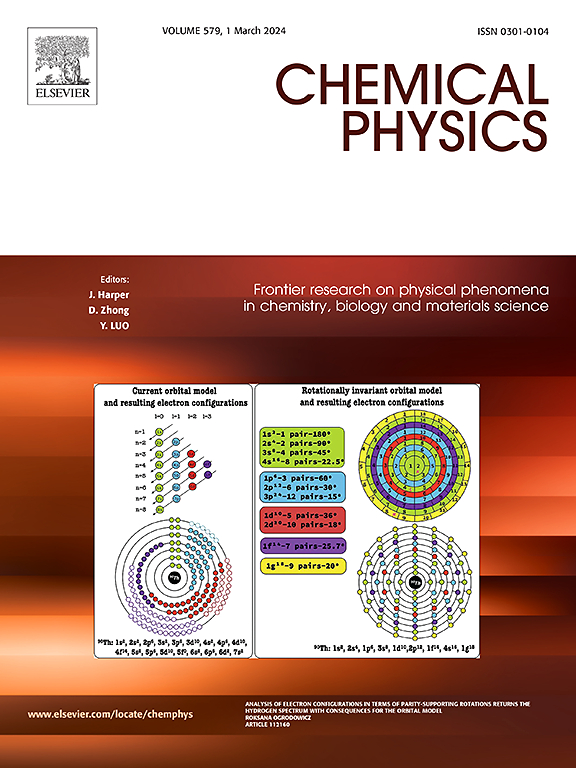Molecular dynamics simulations based on the diffusion interface of solid-phase Ti–Al system
IF 2.4
3区 化学
Q4 CHEMISTRY, PHYSICAL
引用次数: 0
Abstract
The properties of Ti–Al alloys used in industrial applications, including their high-temperature stability and creep resistance, are primarily governed by diffusion processes. Most current studies on the interfacial diffusion of Ti–Al alloys utilize diffusion coupling techniques, which can only observe the interfacial diffusion properties at the microscopic level. Study focuses on modeling the diffusion process at the Ti–Al interface using molecular dynamics to elucidate the atomic-scale mechanism of interfacial diffusion, thereby facilitating a comprehensive understanding of diffusion and allowing the simulation to be conducted in a controlled manner. The simulation results indicate that the square of the diffusion region's thickness is proportional to time. The calculation results show that the Ti(100)//Al(0001) interface has a higher propensity for interdiffusion compared to the Ti(110)//Al(0001) interface. Moreover, the interdiffusion between Ti and Al leads to the amorphization of the Ti–Al interfacial region. The formation of TiAl3 in the diffusion region was confirmed.
基于Ti-Al固相体系扩散界面的分子动力学模拟
工业应用中使用的Ti-Al合金的性能,包括其高温稳定性和抗蠕变性能,主要由扩散过程控制。目前对Ti-Al合金界面扩散的研究大多采用扩散耦合技术,只能在微观层面上观察界面扩散特性。研究重点是利用分子动力学对Ti-Al界面扩散过程进行建模,阐明界面扩散的原子尺度机制,从而促进对扩散的全面理解,并使模拟能够以可控的方式进行。仿真结果表明,扩散区厚度的平方与时间成正比。计算结果表明,与Ti(110)/ Al(0001)界面相比,Ti(100)/ Al(0001)界面具有更高的互扩散倾向。此外,Ti和Al之间的相互扩散导致Ti - Al界面区域的非晶化。证实了TiAl3在扩散区形成。
本文章由计算机程序翻译,如有差异,请以英文原文为准。
求助全文
约1分钟内获得全文
求助全文
来源期刊

Chemical Physics
化学-物理:原子、分子和化学物理
CiteScore
4.60
自引率
4.30%
发文量
278
审稿时长
39 days
期刊介绍:
Chemical Physics publishes experimental and theoretical papers on all aspects of chemical physics. In this journal, experiments are related to theory, and in turn theoretical papers are related to present or future experiments. Subjects covered include: spectroscopy and molecular structure, interacting systems, relaxation phenomena, biological systems, materials, fundamental problems in molecular reactivity, molecular quantum theory and statistical mechanics. Computational chemistry studies of routine character are not appropriate for this journal.
 求助内容:
求助内容: 应助结果提醒方式:
应助结果提醒方式:


